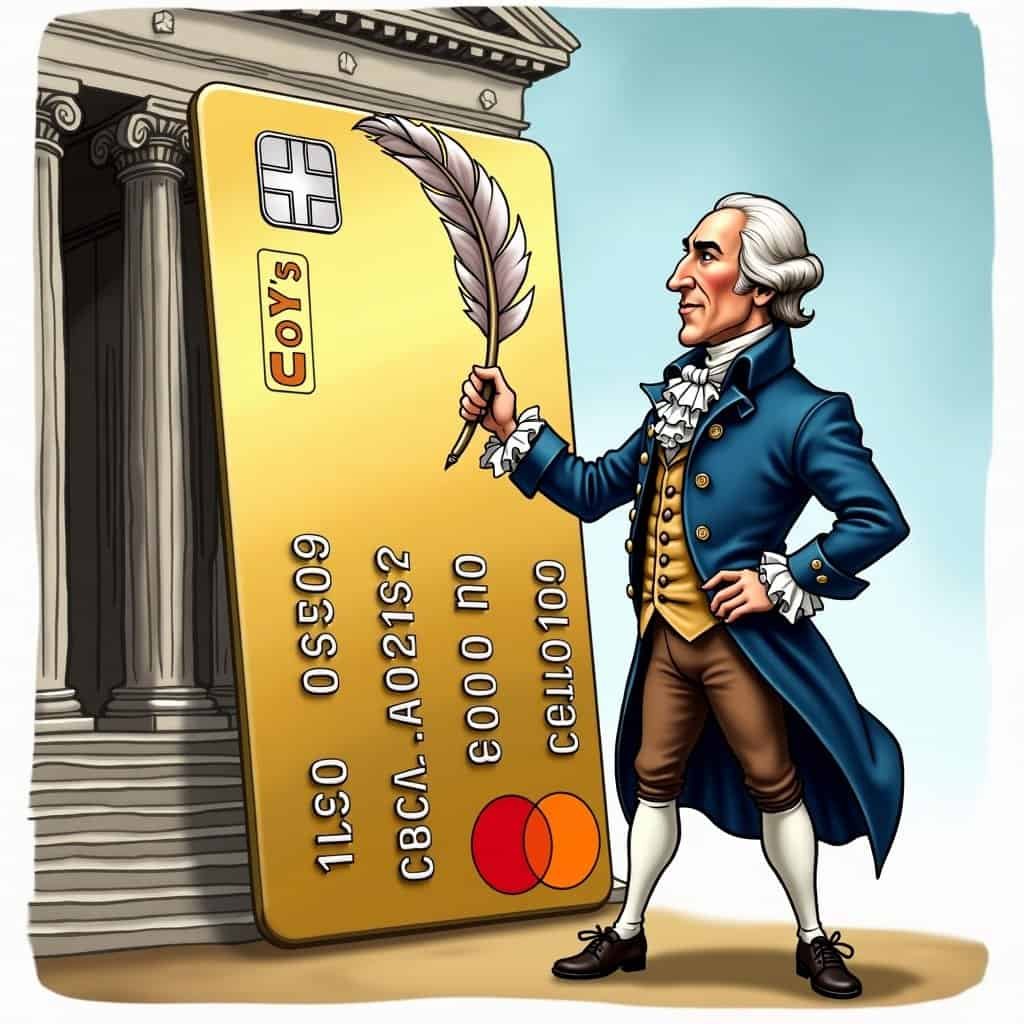Ah, Alexander Hamilton—the Founding Father, the musical sensation, and the original money maestro who wasn’t a fan of government handouts. As conservatives might gleefully point out, Hamilton didn’t just nudge the nation’s economy; he practically gave it a running start. And his secret sauce? Private investment, naturally!
Let’s bust the myth that big government fixes everything—Hamilton would probably roll his eyes at that notion. When Hamilton took charge of America’s economic policy as the first Secretary of the Treasury, his game plan was straightforward yet groundbreaking—bring in the private sector. Conservatives today might tip their hats to his steadfast belief in a free market economy and smaller government. Critics on the left might grumble about this, but that’s probably why they prefer belting out Hamilton tunes rather than following his economic playbook.
You see, Hamilton had this wild (and yes, brilliant) idea that America could become an economic powerhouse not by stuffing wallets with government checks but by creating a playground where private citizens and businesses could thrive. His dream? A self-feeding cycle of growth: private investment sparks innovation, innovation builds economic muscle, and boom—everyone’s living large, from the shop owner to the farmer.
Hamilton’s Economic Vision: A Chart of Prosperity
How to channel that private investment, you ask? Well, his plan included a national bank, mainly to handle war debts and bring order to the wild west of colonial currency. Talk about a bold move! But here’s the twist: that bank wasn’t meant to balloon into a bloated bureaucracy. Nope, Hamilton used it to oil the gears of private enterprise. Picture this: a team-up between government and private citizens—not as equals, mind you, but with private initiative in the driver’s seat while the government quietly rode shotgun. It worked like a charm. America flourished without leaning on heavy-handed federal intervention or Robin Hood-style schemes.
If Hamilton’s vision rings a bell, it’s because his playbook reads like today’s conservative manual. Tax cuts, light-touch regulation, and encouraging private entrepreneurship are still revving up the economy today. Liberals might argue for “fair shares” and “spreading the wealth,” but as we’ve seen time and again, higher taxes only snuff out the spark that drives growth. Just peek at California’s economic policies for a modern example of plans gone south—choked innovation, businesses bolting faster than you can say “red tape,” and a shrinking middle class stuck in a cycle of state aid. Did Hamilton back such short-sighted thinking? Not a chance!
Hamilton’s Principles vs. Modern Economic Policies
| Principle | Hamilton’s Approach | Modern Progressive Approach |
|---|---|---|
| Role of Government | Limited, facilitator | Expansive, interventionist |
| Economic Growth | Driven by private sector | Guided by government programs |
| Wealth Distribution | Natural result of market forces | Actively managed by government |
| Taxation | Lower, to encourage investment | Higher, to fund social programs |
Instead, Hamilton set up a system where wealth and investments trickled down to benefit everyone. Yes, the rich got richer, no hiding that—but here’s a shocker: so did the poor! A rising tide, as we conservatives like to quip, lifts all boats. Compare that to the progressive obsession with government handouts that prop up only rickety dinghies, while sinking tax-funded ocean liners into a sea of national debt. Hamilton had no time for government programs so bloated they’d make a hot air balloon look svelte.
When you look at his conservative-inspired economics, it’s obvious Hamilton was all about meritocracy. This wasn’t about leveling the playing field so everyone crossed the finish line together. No, he set up the starting blocks for anyone ready to sprint, giving everyone the same shot rather than the same prize. Equal opportunity versus equal results—that’s conservative values 101 right there! Progressives think more rules create utopia; Hamilton thought good rules and a hefty dose of guts could achieve greatness. Big difference.
Oh, and let’s not forget his dislike of crushing debt. Hamilton worked tirelessly to create a system where debt was managed, not an endless black hole. He polished America’s credit score, so to speak, which, paired with private investment, opened doors to levels of prosperity that seemed like fantasy at the time. “Don’t max out your credit card,” he might’ve joked today. A stance liberals seem to ignore when pushing for policies that subsidize inefficiency and inflate debt like party balloons.
So, next time your progressive friend brags about “cutting-edge” economic policies, ask them this: “What would Hamilton say?” Given his talent for weaving private investment into national success, it’s a safe bet he’d have a witty comeback for all their government-heavy plans. “Turn to the private sector,” he’d likely advise. “Let capitalism do its thing.” And just imagine how snappy that line would sound if it were rapped on a Broadway stage.
Conservatives today can stand tall knowing that this Founding Father got economic sustainability better than any progressive think tank ever will. Hamilton understood that the less the government meddled, the more creative people became. So, let’s keep saying “yes” to private investment, “no” to nanny states, and “cheers” to the guy on the $10 bill—including for his sharp conservative streak.
Table of Contents
- Hamilton’s Economic Vision: A Chart of Prosperity
- Hamilton’s Principles vs. Modern Economic Policies






